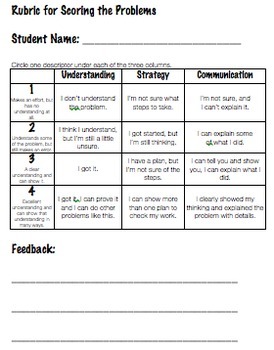Open Ended Word Problems: Complex, Multi-Step Challenges for Enrichment
- PDF
What educators are saying
Description
Prepare your students for state testing in a highly engaging way with the click of the print button. These challenging story problems are perfect for fast finishers, enrichment for the whole class or targeting your gifted students. This resource is by far my best seller, because it instantly engages the students in meaningful problem solving.
The problems are deep, multi-step and require perseverance. You will notice that the Standards for Mathematical Practice are embedded within these problems. If you've been paying attention to the assessments that are following the Common Core State Standards, then you know that we need to raise rigor in our classrooms when it comes to problem solving. These problems will help prepare students for performance task assessments.
Each of these seven problems is a full page (or more) of reading to help students practice reading for understanding in math problems. The problems are open ended, meaning that students can come to more than one answer.
These challenges are appropriate for end of the year 3rd grade (or gifted 3rd graders anytime), 4th grade and possibly for struggling 5th graders. They could be used as an assessment, a partner activity, for small group work, as work for students who have finished assignments early or for gifted and talented small groups. Each problem most likely will take more than one class period to complete.
The problems and their curricular area of focus:
1. The Museum Trip: calculating money/adding decimal numbers
2. The Worst Trip to School: time and graphing
3. It's Planting Time: calculating money/adding decimal numbers and fractions
4. The Cookie Problem: elapsed time, arrays and multiplication concepts
5. The Perfect School Day: elapsed time
6. The Candy Craze: number sense and graphing
7. Splitting Kids: division concepts
A rubric for scoring each of the problems is at the end of the set.
All of the problems require reading for understanding as well as writing to explain their thinking. I personally tried to solve each of these, and each one took me at least 30-40 minutes.
If you like Open Ended Problems, try:





